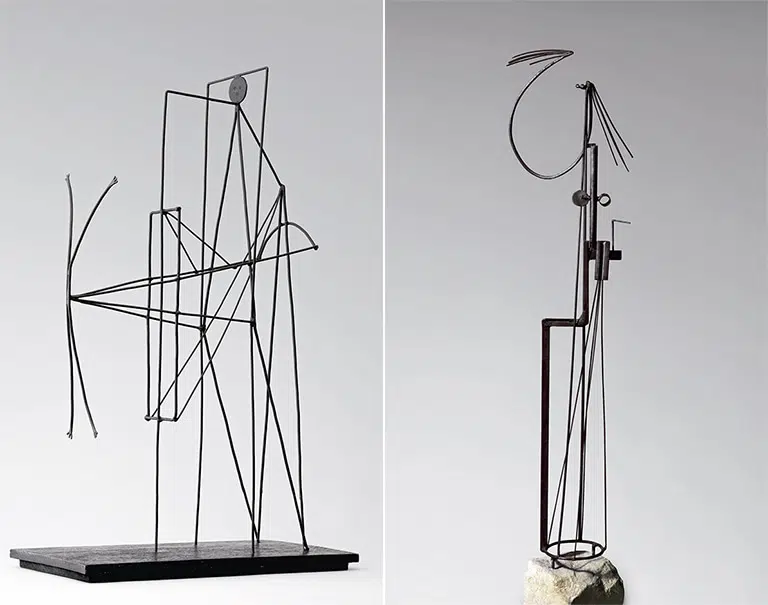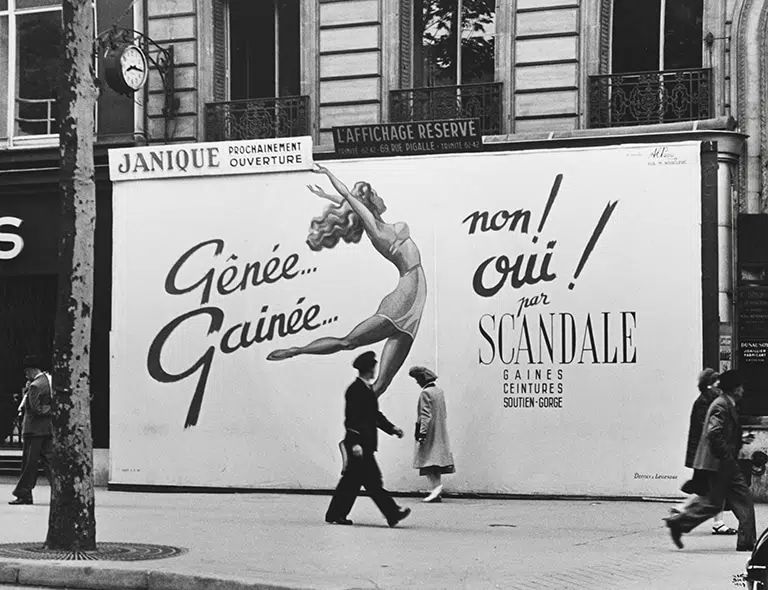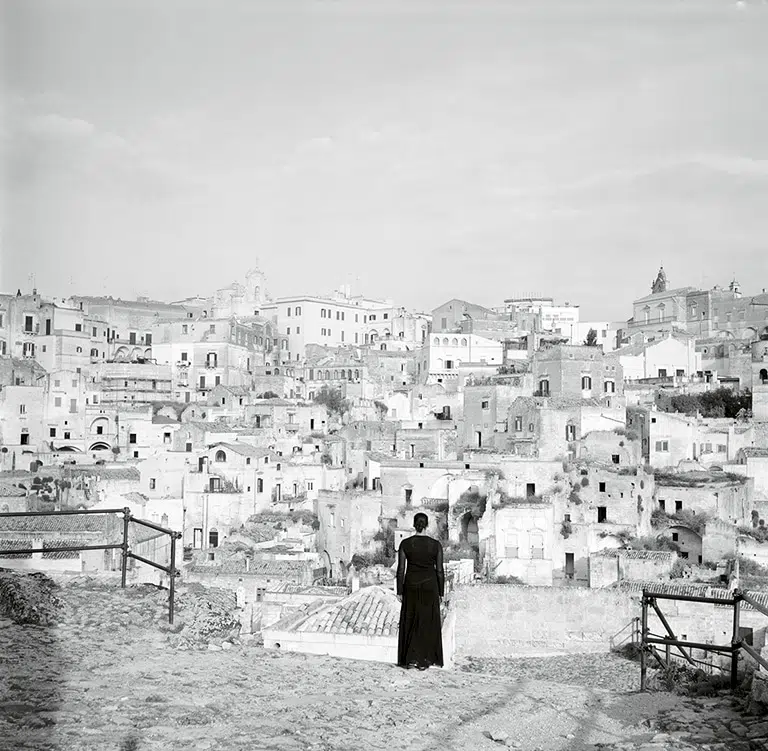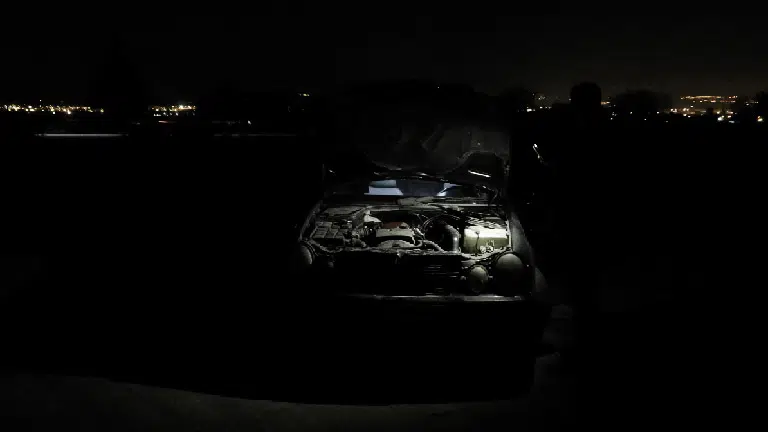Portrait. Dessin dada [Retrato. Dibujo dadá] [Personaje no identificado]
![Portrait. Dessin dada [Retrato. Dibujo dadá] [Personaje no identificado] Portrait. Dessin dada [Retrato. Dibujo dadá] [Personaje no identificado]© Serge Charchoune, VEGAP. Madrid, 2020 © Fundación MAPFRE COLLECTIONS](/media/arte-cultura/colecciones/serge-charchoune/fm000263.jpg)
Serge Charchoune
Portrait. Dessin dada [Retrato. Dibujo dadá] [Personaje no identificado], 1922
Six Dadá Portraits
© Serge Charchoune, VEGAP. Madrid, 2020
© Fundación MAPFRE COLLECTIONS
1922, year 1920 – 1930
Entry date: 2004
Origin: Serge Charchoune / Galerie de Seine, París / Galerie Marcel Fleiss, París, 2004
Technique
Ink and pencil on paper
Dimensions
Dimensions of printed area: 12 × 8 cm
Dimensions frame: 45 x 78 x 4 cm
Inventory
FM000263
Description
Russian painter Serge Charchoune is part of a group of international artists that settled in Barcelona during World War I, between 1914 and 1918. In Paris, he had been a student at the Académie de La Palette under Cubist painters Dunoyer de Segonzac, Metzinguer and Le Fauconnier. He participated for the first time in the Salon des Indépendants in 1913, with cubist works inspired by music. However, he will not have a solo exhibition until 1916, at Galeries Dalmau, in Barcelona, where he will show his work again in 1917.
Upon their arrival in Barcelona, Charchoune and his partner, sculptor Hélène Grünhoff, get to know Olga Sacharoff, her husband Otto Lloyd and Arthur Cravan —pseudonym used by Lloyd’s brother—, as well as Marie Laurencin, Albert Gleizes and his wife. They also become deeply involved in Catalan intellectual circles with a passionate interest in avant-garde art. At the Cercle Artístic, they meet the young Josep de Togores, and soon will befriend poet and art critic Josep M. Junoy and de Vicenç Solé de Sojo. Charchoune will paint his first abstract paintings, the first to be created in Spain. Josep Dalmau exhibits these works in his gallery, causing a great stir in the Barcelona press. This will become one of the first avant-garde milestones in the country.
In Barcelona, within the circle of the Lloyd brothers, Sacharoff, Gleizes and Laurencin, Charchoune discovers the Dadamovement, after Francis Picabia’s stay in Barcelona, having recently arrived from New York, in 1916. Picabia, along with his secretary Maximilien Gauthier —Max Goth—, the group of internationals and Josep Dalmau founded the magazine 391 in Barcelona. Charchoune will soon return to Paris and will not see Picabia, already in the French capital, again until 1920, when his dada phase truly begins. During this period, Charchoune becomes a loyal member of the small Parisian group. He publishes a drawing dedicated to Picabia in 391; meets Tristan Tzara, who will collect his paintings and commission drawings from him; self-publishes in 1921, with the help of Philippe Soupault, Foule immobile, a dada poem acclaimed by his colleagues, and organizes one of the provocative Dada soirées.
In 1922, the artist decides to move to Berlin, with plans to go to Russia in the near future. In the German capital, he joins Dadaist circles, publishes a text on Dada and starts to work on the only Dada magazine written in Russian, Transbordeur Dada, while at the same time publishing drawings in Mécano, Merz and Manomètre. Russian artists and intellectuals exiled in Berlin tell him about their disappointment with the revolution and the new regime. Charchoune decides to return to Paris, where, upon his arrival in 1923, Dadaism is in its death throes and is giving way to the Surrealist movement led by André Breton.
In his Dada phase, Charchoune creates drawings in which he combines geometric and automatic forms, often adding words, similar to Picabia’s mechanical drawings. One of Charchoune trademarks during these years is the repetition of the same original. This is why different versions of some of his works exist, such as Bibiand La Fortune danseuse, both in Centre Pompidou, Musée National d’Art Moderne, in Paris. Charchoune reproduced Foule immobile, with its poems and drawings, by hand, since it is not a printed work.
Among his Dada drawings, a set of portraits stand out. In some cases, they are of well-known subjects such as Tzara and Berdiaev, in addition to self-portraits. In some specific cases, several versions of these Charchounian drawings also exist. The Jacques Herold collection, in Paris, includes a series of small portraits made on the back of a restaurant menu, which, in addition to belonging to the same phase, are closely related to the six works in the collection here.
In them, a mechanical kind of geometry is arranged with a certain sense of humor in recreating the traits of the subject. If in his mechanical portraits, Picabia used the representation of a series of inanimate and abstract objects to construct a metaphor of the person, without any reference to the figure, Charchoune, while also using metaphor, has something else in mind. He provides instead clear references to the model’s physical characteristics, even if he does so in a rakish and transgressive way, preserving his peculiar sense of composition and geometry and his own iconographic language, based on spirals, arabesques, triangles, circles, ovals and hearts. These drawings are both figurative and abstract, sketched in a notebook, made during the artist’s Berlin Dadaist phase.
Also in 1922, Charchoune starts a new chapter he will later name Cubisme ornemental, or ornamental Cubism, a recovery of Cubist drawing based on the purist movement of Le Corbusier and Ozenfant, to which he adheres consciously and definitively in 1924. He also becomes acquainted with the abstract principles of Theo van Doesburg, who he meets in the German capital.In his Cubisme ornemental series Charchoune makes an oil painting such as the portrait of Madame O. Lickteig —from the former Van Doesburg collection and now in the Ludwig Museum in Cologne. The painting is completely abstract; in it the shape of the head is only hinted at in the form of a semicircle, in a grisaille composition.
In the six drawings mentioned above, Charchoune’s technique is more figurative, yet they all seem close to the portrait of Madame Lickteig. Possibly, they are all portraits of people that Charchoune knew; in any event, of them, only three have been identified. The portrait of Tristan Tzara (1896-1963) is one of the best, especially due to its power and conciseness. It is interesting to compare this portrait with the one Francis Picabia made of the Rumanian poet, in 1918. Picabia, who chose abstraction for the portraits of Marie Laurencin and Guillaume Apollinaire, when faced with the task of portraying the father of Dada, did so in a completely naturalistic way, already anticipating his figurative phase, which began in the twenties, after drifting apart from Dadaism.
Another of the subjects identified is Nicolai Berdiaev (1874-1948), a Russian poet who, in 1922, left his country because he was at odds with the direction the new Bolshevik regime was taking. As a youth, Berdiaev had been jailed for participating in the Revolution but he eventually changed his position; in France, he converted to Catholicism. In 1918, he published The Crisis of Art, in Moscow, and in 1922, The New Middle Ages, in Berlin. Berdiaev met with Charchoune in the German capital, and it is possible he was one of the people who dissuaded him from returning to Russia.
The third identified subject is Charchoune himself. The work is a self-portrait “in the shape of a devil”. Another almost identical version exists. The artists represents himself in three elements: a very simple symmetrical arabesque that serves as both the nose and the horns; an inverted semicircle that forms the smiling mouth; and the two eyes, including lashes, expressed more conventionally. The transformation into a naughty devil is quite surprising since, as Josep Pla, who knew him personally, explains in Retrats de Passaport (Passport Portraits), Charchoune was an “evangelical, childish man with clear indescribable eyes, a mystic with an introverted and sad nature. Around the same time, the artist made other self-portraits. In one, an arabesque in the shape of a closed spiral —like a wire sculpture— he drew his profile, in the way he liked to sign his autographs and dedications. The expression on his face is dreamy and distant, and much closer to reality.
These drawings were published while he was still alive in the catalog-monography edited by Galerie de Seine, in 1974, under the title Dessins Dada (Dada drawings). Although it is not clear if Charchoune came up with titles to the drawings in order to differentiate them from each other, there is no doubt surrounding the identity of the subjects. The horns in Autoportrait en diable II also could be interpreted as donkey ears, since in these portraits and the ones in the Jacques Herold collection, some of the subjects possess the traits of such animals as a pig, in the case of Berdiaev (and even more obvious in the one of Herold) and a mouse, created with two superimposed hearts, which also belongs to the Herold series of drawings.
It is worth noting that, in spite of having started his career as an abstract painter in Barcelona, Charchoune has never been represented in any museum or collection in Spain until now. The Charchoune drawings in the MAPFRE Collections are, therefore, the first works of the Russian artist to be included in a Spanish collection.
[Josep Casamartina i Parassols]
Bibliography
BOSQUET, Alain, y GUERRA, René, Charchoune. Harmonies Blanches, exhibition catalog, Paris, Galerie de Seine, 1974.
Charchoune, exhibition catalog, Paris, Musée National d’Art Moderne, 1971.
CREUZE, Raymond (col.), Charchouniana, exhibition catalog, Paris, Raymond Creuze, 1989.
Entre Dadá y la abstracción, exhibition catalog, Madrid, Fundación MAPFRE, 2004.
GUÉNEGAN, Pierre, Serge Charchoune: 1888-1975, catalogue raisonné. Lanwell & Leeds, 2006.
Serge Charchoune, exhibition catalog, Bérgamo, Galeria Lorenzelli, 1969.
Serge Charchoune, exhibition catalog, Paris, Raymond Creuze, 1975.
Sergej Sargun, exhibition catalog, Martin, Musée de Beaux-Arts de Turiec, 1994




